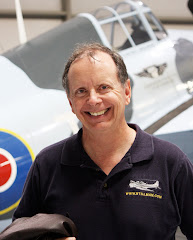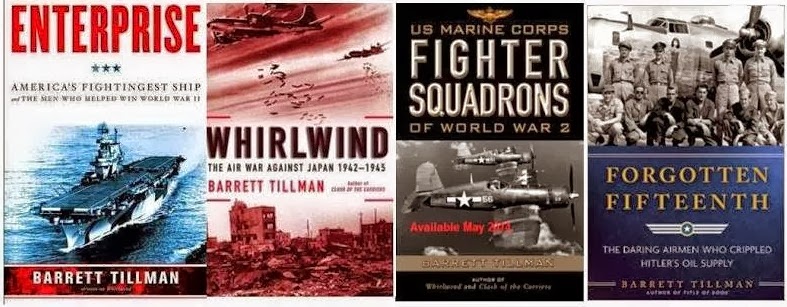Among the groups of people I most admire are self-employed
professionals such as farmers, writers, artists, and entrepreneurs. But that’s a subject for another blog. This month I want to pay tribute to one of
the most self-employed people I ever knew—Michael J. Dillon.
Mike departed the pattern early this month at the age of
81. I was privileged to know him nearly
30 years, as our mutual interests cross-pollinated with aviation and
firearms. Mike was a standout innovator
in both realms. Moreover, he smiled more
than anyone I ever knew.
Born in Philadelphia in 1935, Mike spent his youth up and
down the East Coast while his father was a merchant marine officer. Along the way Mike acquired a taste for
machinery—fast, exotic machinery—starting with race cars and ending with a
privately-owned jet.
The aviation bug bit Mike permanently—and hard. In the early to mid 60s he was working his
way through college, partly by flying spray planes in the south and southwest,
and was within two credits of graduation when he dropped out to fly full
time. Eventually he cadged a right-seat
assignment with TWA (“Try Walking Across”) and flew as a first officer for 13
years. Then, possibly within months of
upgrading to captain, again he struck out on his own. That was Mike—the eternal optimist, a
self-composed individual with enough confidence to fill a hangar full of exotic
airplanes. Which, incidentally, he did.
Along the way, Mike was blessed with Carol, his
extraordinary wife who, in son Steve’s words, “inspired him to be more than he
was.” She continued her teaching career
while raising a family. Not
surprisingly, their three children learned to fly, up to and including
commercial tickets.
Mike Dillon was a dreamer who created his own reality. On a trip through Texas he had spotted a
badly neglected Curtiss P-40. Long story
short: he bought the WW II fighter and fetched it back to Phoenix. Years of weekends and nights passed, but with
some devoted friends, Mike finished the job and painted the Warhawk a warlike
red. He flew it enough to begin a
partial career as a magazine writer, ably assisted by his photographer friend
Nyle Leatham. That was how I learned
about Mike—reading his articles in Air
Progress.
Eventually Mike sold the P-40 and bought a North American
AT-6 trainer. Many years later I asked
him how many hours he had in each warbird but he just unzipped that patented
Dillon grin. “I didn’t keep a logbook,”
he said, “because it could be used against you!” Without being specific, he alluded to
something called the statute of limitations…
Mike was a passionate maverick but he always followed his
own moral compass. When a friend killed
himself and a passenger in the AT-6, Mike refused the widow’s offer of
restitution. He told her, “You didn’t
wreck the plane so you’re not responsible.”
It was a case of good karma coming around because the lady insisted on
giving Mike some of her husband’s automatic weapons, leading in directions we
have noted above.
Nonetheless, the birds began accumulating in the
barn. Mike moved into a large, new
building on Scottsdale Airport, and over the years he had two Beechcraft T-34
trainers (capable of bombing and strafing), a rare two-seat Vought Pinto jet trainer,
and two helicopters. He flew his UH-1B Huey
to New Orleans immediately after Hurricane Katrina in 2005, delivering supplies
and relief crews to devastated areas. He
never asked for a dime of compensation—it was simply the right thing to do. Restored to Vietnam configuration, the Huey became
a test bed for Dillon Aero’s minigun.
And thereby hangs another tale.
After TWA Mike said he never worked another day in his life. He was a born inventor, with that innate
curiosity and imagination ever percolating inside. Of inventiveness he confided, “It’s a curse
because it never shuts off.” But the
challenge of perfecting equipment for loading ammunition was another time at
bat, swinging for the bleachers. And he
connected.
“It’s outta here, folks!”
Mike got involved in hand-loading ammunition to feed his growing
collection of firearms. Starting with a
Star single-stage press, the Dillon evolutionary process led to the rotating
multi-stage concept so common today. The
numbers told the story: from the 300 to the 650 and beyond, each indicating the
expected ammo production per hour.
Different tool heads allowed an owner to load a variety of calibers on
the same machine—an elegant concept.
Eventually man and moment met. In the late 80s Mike obtained one of a very
few civilian General Electric M134 miniguns, a highspeed six-barrel gatling
that spewed 3,000 rounds or more of 7.62 mm per minute. But the design was unnecessarily complex—the
reasons had to do with corporate security—and required considerable
maintenance. Mike began pondering
improvements by the process he called “water cooler engineering.” He and other Dillonites often congregated
around casually to commiserate on things.
The upshot: a simpler, more easily produced and maintained minigun. Ironically, Mike found that he had
unknowingly reverse-engineered GE’s original design.
The Dillon M134D was an immediate hit. Mike logged a lot of travel time
demonstrating the minigun to potential users in the U.S. and abroad. In fact, the SUV-mounted gun, dubbed Raptor,
was unavailable here owing to federal regulations but it found a market among
sheiks and emirs the Middle East. But
the U.S. armed forces seized upon the newer, slicker minigun to mount it on
vehicles, aircraft, and ships for in-port defense. Dillon Aero received a commendation from
Special Operations Task Force 160 in appreciation of the 134D.
Meanwhile, the Dillon Precision side of the house was
going gangbusters. At first, everybody
did everything, from designing and assembling reloaders to shipping them and
answering the phones. But as the
business grew, Mike discerned the advantage of more specialization to meet
customer needs. His staff features
longevity, and today some of the original hires are still working.
Mike’s ironclad warranty is famous in the industry. The company will replace any part or major
component, no questions asked. Aside
from the ethical aspects, Mike said that customer loyalty was enhanced by his
policy, and in all those years he only suspected a couple of clients taking
advantage of his offer.
That was Mike Dillon: dreamer, pragmatist, inventor,
ethicist, friend. And just the nicest
man.




No comments:
Post a Comment